This was published 9 years ago
Museo Machu Picchu, Peru: The Cusco museum with clues to the mystery of Machu Picchu
By Isobel King
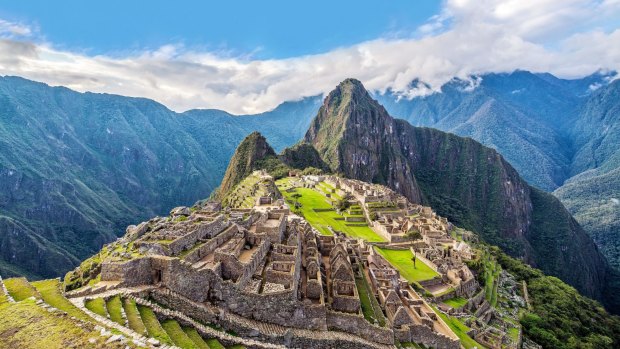
The ancient city was abandoned, virtually intact, around 1540.Credit: Jess Kraft
Much like the dense forest cloud that envelops Machu Picchu on our early September visit, the citadel and its history remain largely shrouded in mystery. The Inca had no system of writing and left no written records, so theories and hypothesis fill the vacuum that archaeologists struggle to explain.
For example, no one knows for sure why such a magnificent city, built high in the Peruvian Andes, was suddenly abandoned by the Incas.
You imagine after all that effort of hand-shaping and hauling tonnes of granite around the mountaintop, constructing hundreds of stone buildings, and turning steep slopes into stepped terraces, that the Inca would not have up and left on a whim.
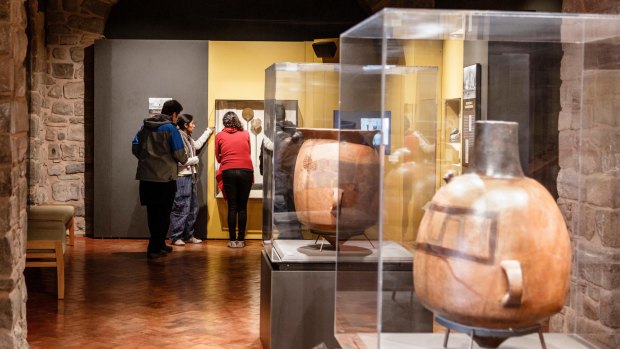
There are fascinating exhibits inside the Casa Concha Museum.Credit: Alamy
The most likely theory is that the population, like much of Inca civilisation, was devastated by disease introduced by the invading Spanish in the 16th century, and there was no longer the labour force to maintain such a remote retreat. Interestingly, there is no evidence that the conquistadors ever attacked or even knew about the mountaintop citadel.
Which brings us to that vexing moniker, "Lost City of the Incas". Machu Picchu was never "lost"; locals always knew it was there.
It was simply brought to world attention after American archaeologist and Yale explorer Hiram Bingham was alerted to the ruins in 1911 by a local farmer, triggering a series of archaeological digs and subsequent restoration of the site. The team recovered more than 4000 artefacts, which were carefully itemised and logged before being shipped off to Yale University for further research.
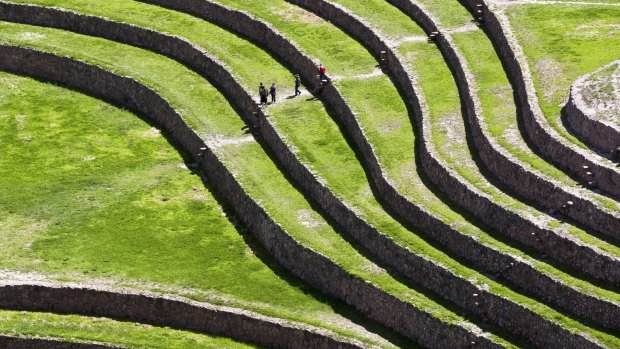
These circular terraces were built so the crops could be grown on the hilly terrain.Credit: Getty Images
It took 100 years for the uncovered items to be returned to Peru, and they now rest in the small Museo Machu Picchu in Cusco, about 90 kilometres away.
Their tardy return by the Americans followed a bitter custody battle, but ultimately a win-win agreement, whereby scholars from both countries can now access the collection for further study. The museum opened in 2011, allowing visitors to not only see the missing pieces of the puzzle, but share in the century of research that provides crucial context.
Most tourists pass through Cusco, the ancient capital of the Inca empire and gateway to several significant Inca landmarks, such as Ollantaytambo, in the Sacred Valley, and countless others within or close to the city.
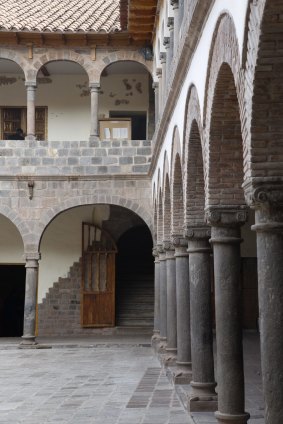
Casa Concha Museum, contains many of the recovered artefacts from a dig last century.Credit: Getty Images
With its many museums, including one dedicated to Inca history – Museo Inka – Cusco is an ideal place to flesh out some of the facts either before or after you make the pilgrimage to Machu Picchu.
It's impossible to visit any of the remnants of Inca construction without coming away with both a profound respect for their engineering skill, and a baffling amount of detail about how and why their methods were so pioneering.
Machu Picchu remains virtually unscathed, while landslides have ravaged surrounding hillsides, and towns and villages. In January 2010, drenching rains and mudslides forced the airlift of almost 2500 people stranded in Machu Picchu Pueblo, the gateway town 450 metres down in the valley below, after road and rail links were destroyed.
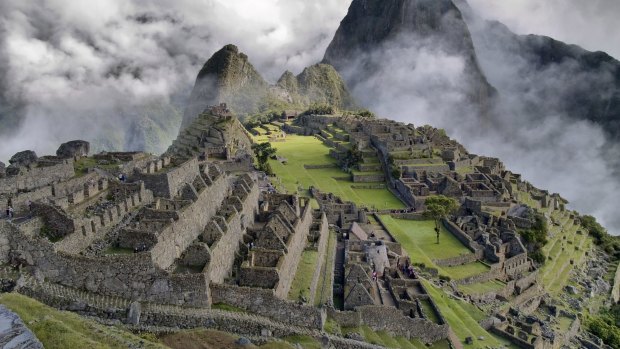
Shrouded in mystery: Machu Picchu, Peru.Credit: iStock
After careful inspection, engineers reported no damage to the ancient city. It stands rock solid. I'd imagine the million-plus tourists who tramp around the ruins each year pose a far greater threat.
When a devastating earthquake struck Cusco in 1950, destroying half the city, the original Inca stonework survived. Suffice to say their mortar-free, "Lego" construction techniques are legendary and they were flawless stonemasons.
For more of the back story to Machu Picchu, however, the people who lived there and what Bingham's team unearthed, the Museo Machu Picchu is a real eye-opener. It's in a charming two-storey colonial building, Casa Concha, less than five minutes' walk from Cusco's central Plaza De Armas.
Its series of themed rooms, laid around a central arched courtyard, house numerous historical collections, interactive exhibits and explanatory videos relating to Machu Picchu and Incan civilisation, but most prized are the returned antiquities.
Excavated between 1912 and 1915 by Bingham and his cohorts, they include mainly ceramics, in unbelievably intact condition, as well as jewellery, bones, tools and other items.
Equally fascinating are black-and-white photographs taken by Bingham during their excavations at Machu Picchu, showing the ramshackle, overgrown state of the site in 1912 – barely recognisable from the well-ordered place it is today.
Their first field excursion focused on cleaning, mapping and excavating Machu Picchu, and locating Inca burials. They eventually found more than 100 of these in small caves on the edge of the site. Thanks to the Inca custom of burying people with their personal possessions, the objects and skeletons recovered provide a compelling picture of how the community lived.
Neatly typed team instructions record Bingham's approach to the digs. For example, under "How to Collect", there's this: "As far as possible, entirely uncover skeletons before removing from ground, also start notes before removing material. It is sometimes difficult to enter correct data later on… The most valuable part of a human skeleton are the skull and jaws. Every effort should be made to get these out entire [sic]… Should teeth drop out, save them carefully and do not allow them to rattle against each other when packed."
To an outsider, they make for comical reading at times, but many in the scientific community were unimpressed with his less-than-thorough approach. An explanatory plaque notes that the team's methods "were flawed even by early 20th-century practice". Among the criticisms is that "they showed only limited interest in the contexts in which artefacts were found, observations considered crucial for inferring ancient activities".
That may be so, but the museum offers ample insight into life at Machu Picchu. Archaeologists now conclude the city was built and occupied between 1450 and 1540, before it was mysteriously abandoned. The granite was sourced from a nearby quarry that you can see today as you wander the ruins.
It was believed to be a royal Inca retreat, an elaborate Camp David if you like, sustained by a community of retainers. At its peak, during the dry season, it would have been home to about 700 people, the stepped agricultural terraces providing a bounty of food.
The skeletons reveal no signs of hard labour or violence, so life appears to have been fairly sedate. "The retainers devoted their days to mundane activities – cooking, brewing corn beer, cleaning, weaving and producing metal objects – while the elite dedicated their time to feasting, hunting and religious worship".
A computer interactive exhibit allows you to "virtually" explore the ruins, zooming in on areas of interest for a closer 360-degree inspection. It might seem gimmicky, but I was so engrossed I failed to notice the impatient queue breathing down my neck.
And to be honest, a large-scale model of Machu Picchu gave me a much clearer perspective of the sprawling city and terraces than the misty, partial views we scored on our visit to the site. It captures both the scale and audacity of the Inca achievement, and the accompanying video by a Yale University expert explains each section in detail.
There's obviously nothing that compares with the awe of seeing Machu Picchu with your own eyes, of walking through the stone ruins and eyeing up the drystone walls, the mist and mystical setting accentuating the marvel of what you're witnessing. The little Museo Machu Picchu in Cusco does, however, provide priceless information that you won't find up on the mountain.
TRIP NOTES
MORE INFORMATION
GETTING THERE
LAN Airlines flies to Lima via Santiago, with connections to Cusco. From Cusco, there are two main options for reaching Machu Picchu: by train or trekking, or a combination.
South America Tourism Office has a five-day Cusco-Machu Picchu tour, taking in the Sacred Valley, starting from $1717 per person; see www.southamericatourism.com/package/peru-cuzco-machu-picchu
STAYING THERE
Belmond Hotel Monasterio, Cusco, is a former monastery that has 126 rooms and junior, presidential and royal suites from $393 per night for two people with buffet breakfast, See www.monasteriohotel.com.
Machu Picchu Pueblo's luxury Sumaq hotel, about 10 minutes' walk from the train station, has rooms from $870 a night for two people, including buffet breakfast and one meal (lunch or dinner), see www.machupicchuhotels-sumaq.com.
SEE + DO
The best time to visit Machu Picchu is during the dry season, between late April and October. Between 10am and around 3pm is peak hour.
Museo Machu Picchu (also known as Casa Concha) is located at Santa Catalina Ancha 320, Cusco. Entry is $8.50.
Isobel King travelled courtesy of South America Tourism Office.
FIVE FACTS ABOUT MACHU PICCHU
STEEP DECLINE To protect against landslides, the Incas stabilised the slopes with around 600 terraces, which literally allow the city to "grip" onto the mountain. The terraces, fortified with granite walls, were used to grow crops.
MORTAR-FREE The Inca had no iron tools, no draft animals and no wheel, yet had extraordinary stonemasonry skills and ingenuity. It's believed they used hammer stones to shape the slabs of granite so the pieces fitted tightly together without the use of mortar.
DIG DEEP It's estimated that 60 per cent of the construction done at Machu Picchu was underground, in the form of deep building foundations and crushed rock used as drainage.
PERMIT ME Permits for the Inca Trail sell out months ahead of peak season, June to August. Only 200 a day are issued for tourists; the other 300 for support crew – so book well ahead. Alternatives are the less-travelled Lares or Salkantay treks to Machu Picchu.
HIGH TIMES The citadel sits at an elevation of 2430 metres above sea level, on a ridge high above the Urubamba River and Machu Picchu Pueblo township. From the town, you can reach Machu Picchu by 20-minute bus ride or a 1½-hour steep hike.
Sign up for the Traveller Deals newsletter
Get exclusive travel deals delivered straight to your inbox. Sign up now.